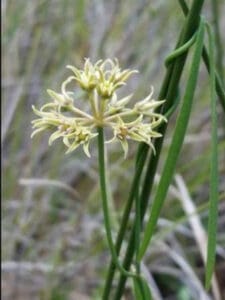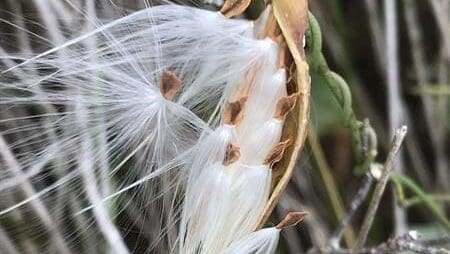Most everyone knows the story of the monarch (Danaus plexippus). A large, burnt orange and black butterfly that migrates thousands of miles from the United States to the oyamel fir forests of Mexico every fall. And, most people seem to know that milkweed (Asclepias sp.) are critical to the reproduction of monarch butterflies. While adult monarchs can feed nectar from most flowers, their caterpillars can only feed on plants in the genus Asclepias. Or do they?

Swallow-wort (Pattalias palustre) flower cluster. Credit: Jay Horn.
It has long been known that while most monarchs migrate, there are populations, mostly in Florida, that do not. That makes sense. In Florida these butterflies are free from the cold of more northern climes and have a year-round source of food for adults and their caterpillars. However, it was quite recently discovered that not only is there a non-migrating population of monarchs in coastal SC, but they are using a plant of a different genus to rear their young!
Swallow-wort (Pattalias palustre) aka Gulf Coast swallow-wort, not to be confused with with non-native and invasive pale or black swallow-wort (Cynanchum rossicum and Cynanchum louiseae), is a twining perennial vine in the Apocynaceae. The Apocynaceae is commonly known as the dogbane family and includes the milkweeds, so swallow-wort and milkweed are in the same plant family. Swallow-wort can be found growing in hammocks and edges of marshes, primarily on barrier islands, and is fairly common from North Carolina south to south Florida and west to east Texas. The small off-white, star-shaped flowers grow in clusters along the stem from June to July. The seed pods begin to develop from July through October and open to reveal flat, round, and brown seeds attached to fluffy white hairs, also known as pappus or coma. The pappus allows the seeds to distribute on the wind.
As time goes on, I wonder if we will find other species in the Apocynaceae that can sustain our beloved monarchs.



